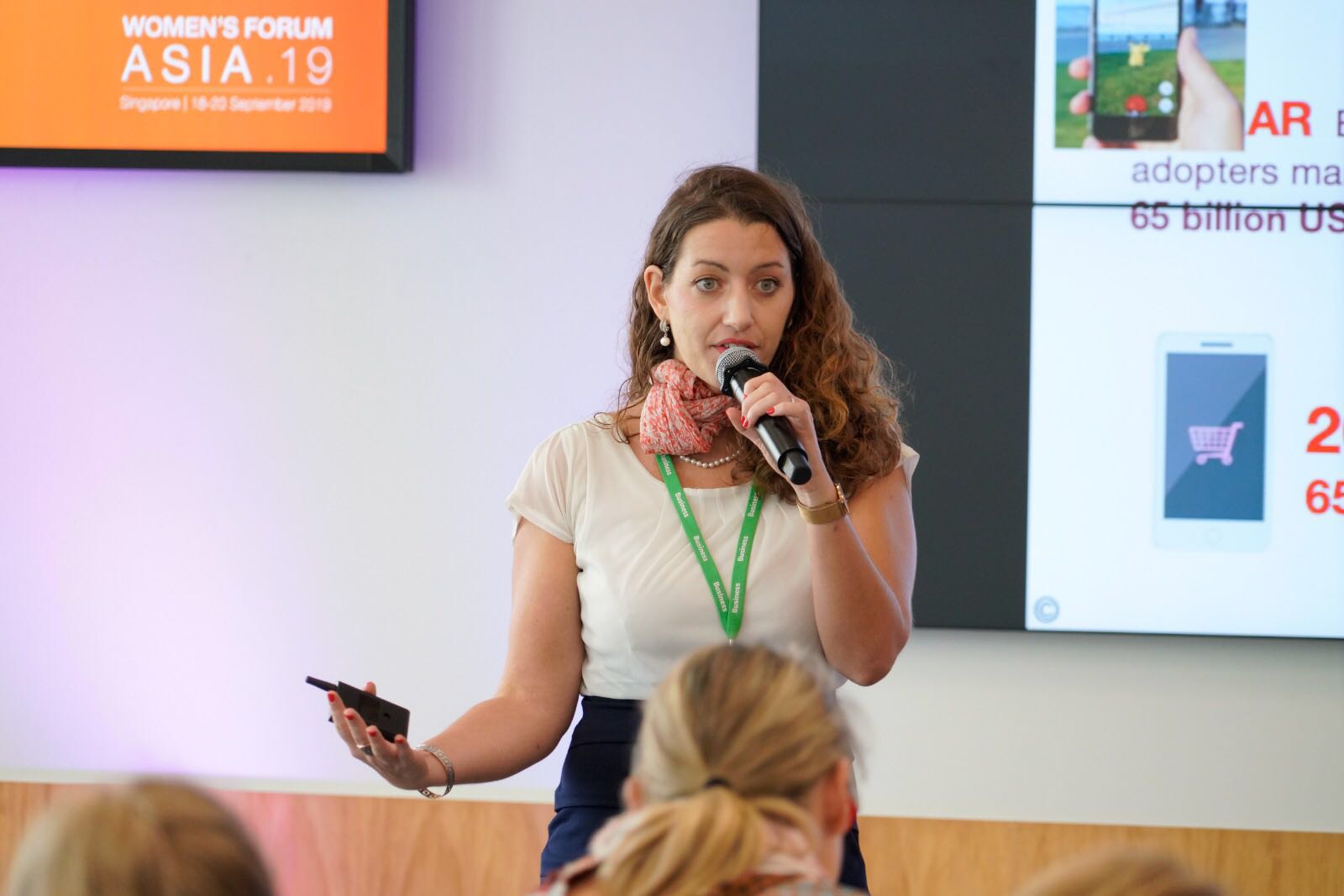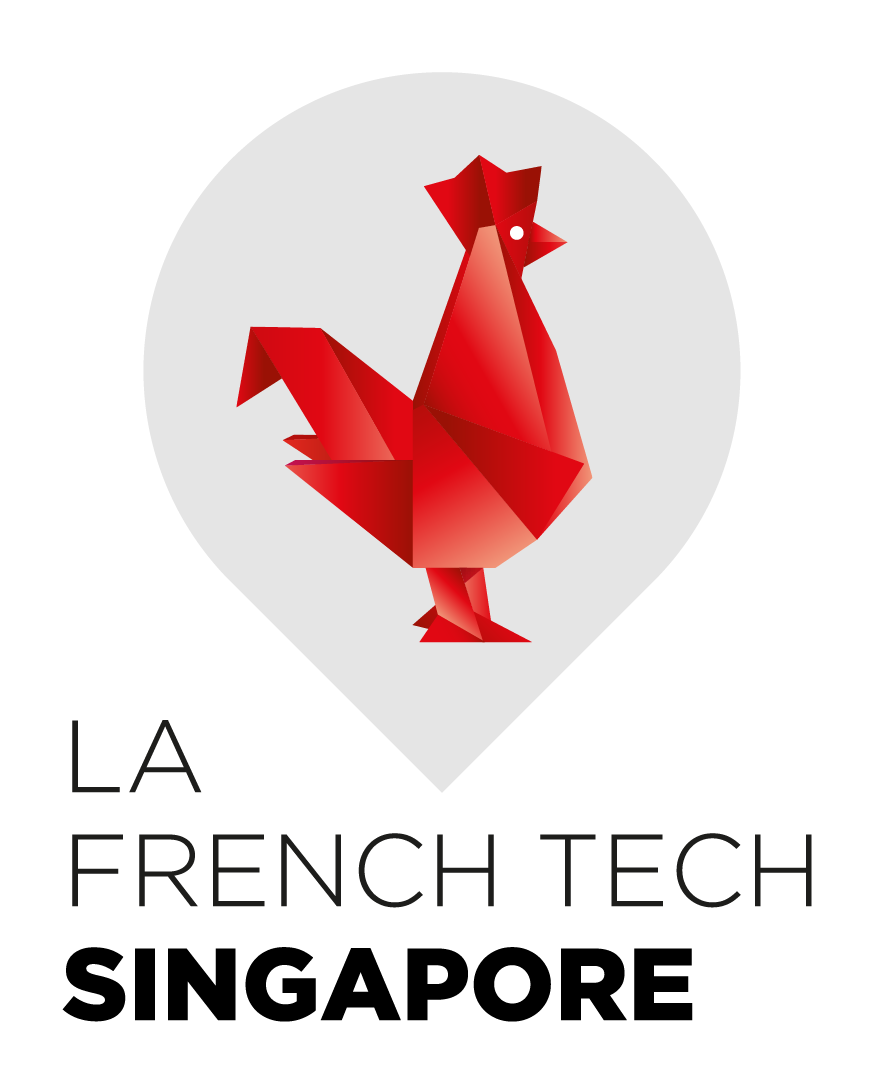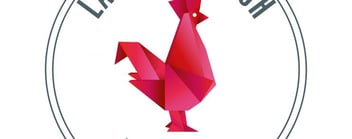
Hi Cecile, what do you do and what brought you back to Asia ?
Hi everyone! I am the founder of Easy Bacchus, a wine and tech start-up aiming to make wine accessible and fun for everyone through tech usage, especially for the Chinese market. I discovered wine a long time ago when I was 15, back to the French Hotel School of Paris. I accrued a vast wealth of knowledge when it comes to all things wine related. So I tried to explain wine same way to my close ones and quickly realized that the way wine was taught was too technical and complicated for many people. Therefore, I wanted to find a way to communicate with people about wine that was meaningful and interesting. And I kept this idea at the back of my mind for many years while working in international hospitality positions.
China is now booming in terms of wine consumption and has a considerable need for wine education. Three years ago, I wanted to go there and lucky me, my life partner, who is working in a French medtech, got an opportunity to expand Chinese market in Shenzhen. Thinking back, it was the perfect location! I developed some smart wine labels (Scratch & Sniff – 3 patents) knowing that the best printing and packaging factories are there. Currently I am developing a mobile application offering easy selection of wine and discovery in Augmented Reality.
I strongly believe in communities and network power. Quickly after my arrival in Shenzhen, I decided to involve myself in La French tech. Today, I am also President of the French Tech Community in Hong-Kong / Shenzhen and very dedicated not only to bring the tech community together, but also help, support and most importantly, connect people!
You are in Shenzhen and you know very well Hong Kong, what are the differences between both ecosystems?
First let me say a word about Shenzhen where I live. Shenzhen is known as the Silicon Valley of China, the place to be for hardware businesses but I would say more broadly innovation. We speak about “Shenzhen speed” as you can prototype and manufacture your product very quickly, at an affordable cost and yet guaranteeing a high quality standard.
But Shenzhen would be nothing with the proximity of factories in the surrounding cities.
We designate it as the Greater Bay Area that covers the 9 cities of Guangdong province (including Shenzhen and Guangzhou) and also Hong-Kong and Macao. This incredible vibrant ecosystem represents 1.4 trillion US$ GDP and 56 million people over 56,000 sq. meters. In comparison, San Francisco Bay do only represents 7.8 million people, 7.81 billion US$ GDP over 36,700 sq. meters.
Shenzhen is very tech focused with 34% Chinese patents registered, more than 100 companies listed and headquarters of Tencent, DJI, Huawei etc. More than 4% of Shenzhen GDP is allocated to R&D. The city is young, with mostly below 40 years olds, but yet very business oriented. As a comparison, Hong-Kong has a more mature economy and international with a lot of fintech, agencies, and big corporates Asian head offices.
The Chinese government has announced last February a global Greater Bay area plan. By 2035, the region would have developed an economic system largely driven by innovation. It is intertwined with the Made in China and One Belt One road plans. Guangzhou, Shenzhen, Hong Kong and Macau were identified as core engines for driving growth in nearby regions. The road map calls for Hong Kong to build on its status as an international financial, transportation and trade hub, Macau as tourism and international hub, Shenzhen as tech hub and Guangzhou as administrative one.
The Greater Bay Area shall become an economic ecosystem, driven by innovation and acquire world-wide recognition for its standard of living, working and travelling conditions. Everything has been thought of: from science and technology innovation, to information technology infrastructure, insurance, economic and financial framework, securities and funds, etc.
How is it to be an entrepreneur in Shenzhen?
Shenzhen is really at the heart of innovation and entrepreneurship. There is plenty of opportunities here. People are open-minded and it is easy to network but you have to say YES to life opportunities and also NO to some solicitations. Government eased the company creation for foreign entrepreneurs. You just need to find the right people to help you opening a bank account and deal with the accounting. My team is remotely based with regards to the app development / AR / design so I am very polyvalent and I need to be multi-skilled.
I have learnt a lot about Chinese habits and I really think that if you want to do business here, you have to be physically here. In Shenzhen, the proximity with Hong-Kong is a real plus for business development. .
Let’s talk about your business. How do Asians and especially Chinese consume wine?
China is about to become the second worldwide wine market by 2022. Today consumers represent only 11% of the urban population aged 18-54, but it is growing fast. Chinese consume on average 1.4 litres of wine by person yearly, which is far from France (20 litres/person/year). China’s population is much bigger so there is room for more demand.
Chinese also do consume mostly red wine and when they do consume white wine, it is mainly women and sweet wines. Consumers tend to be the ones with highest income, buying wines for the brand. But the growing part of wine consumers is now the youngest one, located in big economic cities (Tiers A-B-C) with higher disposable income (+6% YoY).
They are savvy customers, want to enjoy life and look a lot at western products such as wines though do not know how to choose neither taste wine. Today customers can only choose based on wine information found online, by origin, price or grape specification but they do not know at all what it means nor how a French Pinot Noir would taste like. Wine represents the “art de vivre” and a way to socialize. They have a high interest in learning but it is still a complex product.
Fake wines is also a big concern with 30% of wine imported being fakes. Bringing trust and high quality sourced products is key. Offline sales still dominate the market but Chinese customers are connected and go more and more online to purchase wine (20% of online sales are made by young consumers). Asia accounts for 11% of the world’s wine consumption. Others south-east Asia countries’ consumption is also growing fast: mainly Vietnam and Thailand (4.4% and 5% CAGR 2019-2023). We hope to establish there soon.
How tech has transformed the wine industry?
New generations and social media force the whole industry to pivot accordingly. E-commerce is now very important in terms of wine sales, representing 10% of worldwide sales, but this is much higher in China (20%).
Online experience offers more choices and information. Social media platforms also play a key role in user recommendation and brand image.
We see many mobile applications nowadays in the wine market (BtoB or BtoC) advising on wine purchase by providing different key data. But unfortunately there is not yet a unique platform covering all consumer experiences from purchase to tasting, not compromising on the educational value.
Mobile users are more engaged, using mobile application for information and guide them in their purchase decision. Mobile conversion is consequent, for online but also offline purchases. 84% of smartphone shoppers use their phone for help in stores.
QR codes have become a strong marketing tool, used to link customers to key product information at the point of purchase and more broadly, brand experience. They are used daily in Asia, and especially in China.
New disruptive technologies such as VR/AR totally help brand recognition and conversion.
In China, e-commerce giants Alibaba and JD.com lead the way with fast delivery options and new retails offers.
As “La French Tech”, a movement was born in France 3 years ago called “La Wine Tech” grabbing all Wine & Tech companies – not only French to bring more exposure as a group and create synergies within companies.
To sum up there is a real need to teach how to appreciate wines and use tech to ease wine access right?
Adapting to consumers’ habits in order to come up with relevant wine offers is essential.
For example, the smart wine labels use consumer’s 5 senses. You can
- scratch-and-sniff wine main aromas (up to 100 times)
- touch & feel wine intensity,
- find the best match wine for a particular occasion and dish pairing
- scan the label to get more information about one particular wine
Sensorial marketing is key in the product experience, it triggers emotions. Researchers believe that smell is the sense most powerfully linked to emotion, with over 75% of our feelings generated by odors. Sensory marketing strongly triggers consumers’ purchase: it can increase sales from 80 to 300% but also improve engagement with brands.
All information about wine on the market are mostly based on origins or price. We therefore decided to focus on useful and real life wine selection criteria such as the occasion, dish pairing, aromas.
Our smart wine labels were sold BtoB initially to wine importers. Now it is mostly used in BtoC through WeChat shop with direct interaction with consumers. I also use a lot the smart wine labels during my wine events. (for companies as private individuals) that helps consumer to recognize wine specific aromas but also remember them in a very playful way.
My nickname is The Shenzhen Wine Lady.
Most Chinese people are smartphone users (60%). Currently Wechat has more than 1.1 billion active users. In addition, China’s market spending on augmented reality and virtual reality (VR/AR) is forecasted to exceed $65.21 billion in 2023. 70% of consumers would make more transactions if A/R features are attached to a product.
This market is a very early adopter of such technology. This is why I decided after the smart wine labels, to create a mobile application that will integrate Augmented Reality. I want it to become the reference platform along the entire customer wine journey from purchase to tasting and education.
Through Easy Bacchus mobile application, customers will be able to select and purchase by visuals their wine according to its aromas, occasion, dish pairing, budget or colors and receive their wine with the smart wine label.
Augmented Reality customizes wine experience and helps building a long term relationship with customers. Hence, my avatar, Cecilia the French girl, will teach in a very playful way how to taste wine else how to make wine. Users will also be able to grab and move with their phone some virtual wine elements such as their virtual glass of wine or wine grape, making this experience very interactive.
How “Dare you” to be a woman in wine tech?
For me it just made sense. I used to feel, from very early on, customers’ struggle to understand this complex product. I love tech and we are surrounded by it everyday, especially in China! Using tech to ease wine understanding and appreciation just made sense.
Of course tech entrepreneurs in the wine industry are unfortunately still male dominant. But I see it as an opportunity. Being a French woman is very appreciated here in China and they even found me this nickname The Shenzhen Wine Lady. Being a woman entrepreneurE is very welcomed here so I just embrace opportunities, continue my journey, follow my vision while adapting to the market everyday.
Even if we see more and more women in this industry, which is very positive, it is not enough. We need to encourage more women at an individual level to join us but also all together to create a bigger impact.
At a personal level, I am very dedicated to empower women around me by bringing them confidence. I met so many women afraid of being an entrepreneur, or being a mom entrepreneur. So I am trying to do so by showing them practical tools, the power of network, and by connecting them with relevant contacts.
Finding female tech talents and giving them exposure is also one of my goals. Equally, I am very proud to be part of this recent movement Women in French Tech #womeninfrenchtech
How do you bring more diversity?
Wine-wise I am bringing diversity offering another alternative to conventional wine access, making it more profitable and accessible for everyone. It is very important to adapt to each market’s habit and tech is indeed very present in the Chinese market.
French Tech wise, I work on connecting the whole community together. I strongly believe that we are stronger together. Typically, I connect start-ups to corporates and investors, set up partnerships with investors and incubators including local ones, as well as with institutions and governments.
Women-wise, I am very proud to be a women entrepreneur in China. I brought some creativity in the wine market and insights to the French Culture. But I must say that I also learnt a lot from the market and adapted my offers accordingly!
Diversity is key. We need a variety of skills, sometimes location but most importantly diversity of people to succeed.
Cecile, thank you !
Get in touch with us @ womenfrenchtech at gmail dot com
In collaboration with Amel Rigneau & Sophie Guo



